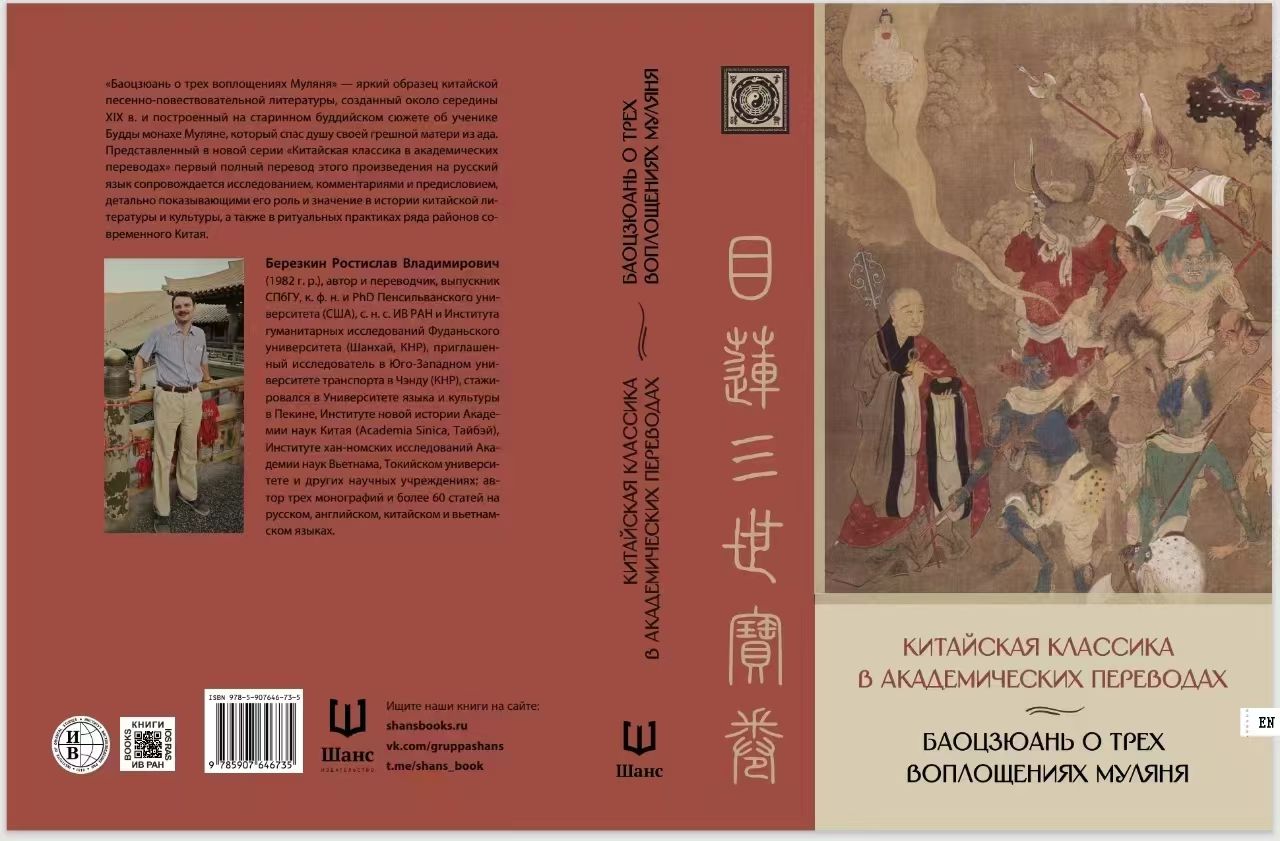
The book was published by Shans in May 2024.
The present book includes the first complete Russian translation of a masterpiece of Chinese prosimetric popular literature – Baojuan of Mulian Rescuing His Mother during Three Rebirths (Mulian san shi jiu mu baojuan 目蓮三世救母寶卷). This text belongs to the genre of baojuan (precious scrolls) that were used in oral recitations for broad lay audiences, usually with the strongly pronounced religious thematic. There are several recensions of the Baojuan of Mulian; the one translated here belongs to the late period of the genre’s development. Its earliest extant woodblock edition dates back to 1876; still, the text certainly existed in the earlier period. It uses the story of Mulian, one of the first ten disciples of Buddha Shakyamuni, rescuing the soul of his sinful mother from the torments of hell. This story can be traced back to a Chinese Buddhist scripture – the Sutra of Ullambana, Pronounced by the Buddha (Fo shuo Yulanpen jing 佛説盂蘭盆經), but later was significantly developed in Chinese popular literature, written with the use of the vernacular language; including storytelling and dramatic forms. The Baojuan of Mulian Rescuing His Mother during Three Rebirths belongs to the late stage of this story’s evolution in Chinese literature. It contains the prolonged description of the underworld, which represents the popular cosmology of Chinese people in the late imperial period. Besides, it includes many details on everyday life and customs of commoners in traditional China. The episodes with the new rebirths of Mulian as the rebel leader Huang Chao 黃巢 (d. 884), who lived during the Tang dynasty, and the butcher He Yin 賀因connects the original Buddhist subject with the specific interpretation of Chinese medieval history and beliefs of dissenting religious movements (popular lay Buddhist denominations) of the late imperial period. This text already has been translated into English, but the present translation contains more detailed comments and explanations, based on the author’s long-term research on the problems concerning development and functioning of the baojuan form in traditional Chinese society. The book also contains appendices, one of them being the research article on the spread of the Mulian story in the countries of East and Central Asia, including Japan, Korea, Vietnam, Tibet and Mongolia. In several of them this story still enjoys popularity among the lay people as it is related to common annual observances centered on salvational rites and offerings for the dead, going beyond the limits of the Buddhist monastic environment. It is the first attempt of such comprehensive research on the transmission of this story in the pre-modern period (seventh—seventeenth centuries), concentrating on the impact of Chinese popular versions in the neighboring countries. Other two appendices contain translations of two early Chinese Buddhist texts relating this story (fifth—sixth centuries).